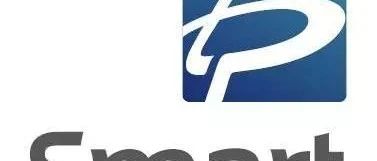|
|
The UN transfer pricing manual’s guidance on IP valuation and royalty rates
《联合国发展中国家转让定价操作手册》对知识产权估值和特许权使用费率的指导意见
来源:mnetax.com 时间:2021年5月19日 By Dr. J. Harold McClure
The latest edition of the United Nations Practical Manual on Transfer Pricing for Developing Countries, released April 27, includes some useful observations on the nature of intangible assets, their creation, and the key issue of ownership among multinational group affiliates.
4月27日发布的最新版《联合国发展中国家转让定价操作手册》(以下简称“UN操作手册”)就无形资产的性质、产生以及跨国集团各成员实体之间所有权等关键问题提出了一些有用的指导意见。
The chapter, however, has a very sparse discussion of the evaluation of intercompany royalty rates. As affiliates in developing nations are often licensees and not owners of valuable intangible assets, a more thorough discussion of what constitutes an arm’s length royalty rate would be welcome.
然而,UN操作手册有关章节很少讨论集团内特许权使用费率的价值评估问题。由于发展中国家的成员实体通常是被许可人而不是有价值的无形资产的所有者,因此,欢迎对符合独立交易原则的特许权使用费率的构成进行更彻底的讨论。
Valuing transferred intangibles
无形资产转让的估值
Section 6.3.3 is entitled the significance of DAEMPE, where DAEMPE stands for development, acquisition, enhancement, maintenance, protection, and exploitation of intangible assets. Other discussions have coined the term DEMPE by leaving out the important aspect of where one affiliate acquires intangible assets originally developed by another affiliate.
第6.3.3节题为DAEMPE的重要性,其中DAEMPE代表无形资产的开发、获得、价值提升、维护、保护、应用。其他的讨论创造了DEMPE这个术语,但它忽略了一个成员实体从何处获得另一成员实体最初开发的无形资产这一重要事实。
The UN manual provides several examples of the valuation of acquired intangible assets, including an example of the probability-weighted discount cash flow model.
UN操作手册提供了几个无形资产交易估值的案例,包括一个概率加权平均折现现金流模型的案例。
Consider the UN manual’s example of a pharmaceutical multinational with a Swiss parent, a Hungarian affiliate that does both early-stage R&D and contract manufacturing, and distribution affiliates in Western Europe.
以UN操作手册中的一家跨国制药公司为例,该公司总部位于瑞士,在匈牙利有一家子公司,从事早期研发和合约生产,并在西欧设有分销子公司。
The Hungarian affiliate developed viral treatments through phase II trials which were concluded at the end of 2018. This in-process R&D was sold to the Swiss parent, with the Swiss parent conducting phase III trials in 2019 and 2020. The hope was to license the product intangibles starting in 2021, where the Hungarian affiliate would act as a contract manufacturer, and the Western European affiliates would act as distributors on behalf of the Swiss owner of the fully developed production intangibles.
匈牙利公司通过II期试验开发了病毒疗法,该试验于2018年底结束。这项正在进行的研发被转让给瑞士母公司,瑞士母公司在2019年和2020年进行了III期试验,并希望从2021年开始对生产性无形资产进行授权,届时匈牙利公司将作为合约制造商,西欧子公司作为分销商,将代表瑞士母公司成为完全开发的生产性无形资产的所有者。
R&D expenses were $100 million per year both in 2019 and in 2020. There were three sets of sales projections. There was a 25 percent chance that no sales would be made as the probability of obtaining regulatory approval was only 75 percent. There was a 25 percent chance that this new treatment would be a blockbuster, generating $750 million per year. The most likely scenario with a probability of 50 percent was that sales would be $250 million per year. The probability-weighted scenario had expected sales equal to $312.5 million per year.
2019-2020年度每年的研发费用均为1亿美元,该公司制定了三套销售计划。由于获得监管部门批准的可能性只有75%,因此销售不出去的可能性为25%。这种新的治疗方法有25%的可能性会轰动一时,每年将产生7.5亿美元的收入。最有可能的情况(50%)是每年的销售额为2.5亿美元。在概率加权平均的情况下,该公司每年预计销售额为3.125亿美元。
Production costs were estimated to be equal to 40 percent of sales, and selling expenses were estimated to be equal to 20 percent of sales. As such, projected operating profits from 2021 through the life of the product intangibles represent 40 percent of sales or $125 million per year. The UN example assumed that the product’s intangible life extends only to 2023. A more likely scenario would be to consider that the product’s intangible life extends to 2028.
生产成本预计为销售额的40%,销售费用预计为销售额的20%。因此,从2021年到生产性无形资产生命周期预计营业利润占销售额的40%,即每年1.25亿美元。UN操作手册的案例假设生产性无形资产的寿命只能延续到2023年。更有可能的情况是考虑到生产性无形资产的寿命延长到2028年。
The UN example assumes that the combined routine returns for production and distribution is only $10 million per year, which it notes represents a 5.33 percent markup over the sum of production costs and selling expenses.
UN操作手册的案例假设每年生产制造商和分销商的常规收益合计只有1000万美元,这表明该利润水平超出了生产成本和销售费用总和的5.33%。
Table 1 shows projected income and cash flows (CF) under these assumptions, where cash flows represent operating profits minus routine returns. Cash flows are negative $100 million per year for 2019 and 2020 and are $115 million per year from 2021 onwards. The routine returns in the UN example represent only 3.2 percent of sales (S), with cash flows representing 36.8 percent of sales.
表1显示了这些假设下的预计收入和现金流量(CF),其中现金流量为营业利润减去常规收益。2019-2020年度的现金流量为每年负1亿美元,2021年以后为每年1.15亿美元。在UN操作手册的案例中,常规收益仅占销售额的3.2% (S),现金流量则占销售额的36.8%。
Table 2 presents an alternative model where routine returns represent 8 percent of sales, so cash flows are 32 percent of sales. If the routine return to production represents a 10 percent markup, then this routine return alone is $12.5 million per year or 4 percent of sales.
表2给出了一种替代模型,其中常规收益占销售额的8%,而现金流量占销售额的32%。如果生产制造商的常规收益为10%的利润率,那么仅常规收益每年就是1250万美元或销售额的4%。
If the routine return for distribution represents a 20 percent markup over its selling costs, then this routine return alone represents another $12.5 million or 4 percent per year.
如果分销商的常规收益比其销售成本高出20%,那么该常规收益即为另外的1250万美元或年销售额的4%。
The tax authorities in Hungary and Western Europe would likely argue for higher routine returns than those assumed in Table 1.
匈牙利和西欧的税务当局可能会主张获得比表1中假设的更高的常规收益。
Table 1: Projected Profits and Cash Flows Assuming Modest Routine Returns
表1:假设常规收益适中的预计利润和现金流量
百万
| 2019
| 2020
| 2021
| 2022
| 2023
| 2024
| 2025
| 2026
| 2027
| 2028
| 销售额
| $0.0
| $0.0
| $312.5
| $312.5
| $312.5
| $312.5
| $312.5
| $312.5
| $312.5
| $312.5
| 生产成本
| $0.0
| $0.0
| $125.0
| 125.0
| 125.0
| 125.0
| 125.0
| 125.0
| 125.0
| 125.0
| 销售成本
| $0.0
| $0.0
| $62.5
| $62.5
| $62.5
| $62.5
| $62.5
| $62.5
| $62.5
| $62.5
| 研发费用
| $100.0
| $100.0
| $0.0
| $0.0
| $0.0
| $0.0
| $0.0
| $0.0
| $0.0
| $0.0
| 营业利润
| -$100.0
| -$100.0
| $125.0
| $125.0
| $125.0
| $125.0
| $125.0
| $125.0
| $125.0
| $125.0
| 常规收益
| $0.0
| $0.0
| $10.0
| $10.0
| $10.0
| $10.0
| $10.0
| $10.0
| $10.0
| $10.0
| 现金流量
| -$100.0
| -$100.0
| $115.0
| $115.0
| $115.0
| $115.0
| $115.0
| $115.0
| $115.0
| $115.0
|
Table 2: Projected Profits and Cash Flows Assuming Higher Routine Returns
表2:假设常规收益较高的预计利润和现金流量
百万
| 2019
| 2020
| 2021
| 2022
| 2023
| 2024
| 2025
| 2026
| 2027
| 2028
| 销售额
| $0.0
| $0.0
| $312.5
| $312.5
| $312.5
| $312.5
| $312.5
| $312.5
| $312.5
| $312.5
| 生产成本
| $0.0
| $0.0
| $125.0
| 125.0
| 125.0
| 125.0
| 125.0
| 125.0
| 125.0
| 125.0
| 销售成本
| $0.0
| $0.0
| $62.5
| $62.5
| $62.5
| $62.5
| $62.5
| $62.5
| $62.5
| $62.5
| 研发费用
| $100.0
| $100.0
| $0.0
| $0.0
| $0.0
| $0.0
| $0.0
| $0.0
| $0.0
| $0.0
| 营业利润
| -$100.0
| -$100.0
| $125.0
| $125.0
| $125.0
| $125.0
| $125.0
| $125.0
| $125.0
| $125.0
| 常规收益
| $0.0
| $0.0
| $25.0
| $25.0
| $25.0
| $25.0
| $25.0
| $25.0
| $25.0
| $25.0
| 现金流量
| -$100.0
| -$100.0
| $100.0
| $100.0
| $100.0
| $100.0
| $100.0
| $100.0
| $100.0
| $100.0
|
The fair market value for the transferred intangible depend not only on the assumed projected income but also on the estimate of the routine returns, the economic useful life of the product intangibles, and the appropriate discount rate.
无形资产交易的公允市场价值不仅取决于假定的预计收益,还取决于对常规收益的估计、生产性无形资产的经济使用寿命和适当的折现率。
The UN example assumed the lower estimate of routine returns, as well as a rather short economic useful life, as the projections were extended only through 2023. If the discount rate were 12 percent, the estimated value would be only $51.2 million. If the discount rate were 10 percent, the estimated value would be only $62.8 million.
UN操作手册的案例是基于常规收益较低以及经济使用寿命相对较短的假设,因为预测仅延长到2023年。如果贴现率是12%,无形资产的估值只有5120万美元;如果折扣率为10%,则无形资产的估值将只有6280万美元。
If the economic useful life extends through 2028, the estimated value would be $333.48 million if the discount rate were 10 percent. If the discount rate were 12 percent, the estimated value would be $286.41 million.
如果经济使用寿命延续到2028年且贴现率为10%,无形资产的估值为3.348亿美元;如果贴现率为12%,则无形资产的估值为2.8641亿美元。
The issue of the economic useful life is a crucial and often contentious issue between multinationals and tax authorities.
经济使用寿命问题是跨国公司和税务当局之间一个至关重要且经常引起争议的问题。
We also noted that the UN example assumes a low estimate of the routine returns for the Hungarian contract manufacturer and the distribution affiliates.
我们还注意到,UN操作手册的案例对匈牙利合约制造商和分销商的常规收益估值较低。
Table 2 assumes that the combined routine returns for manufacturing and distribution represent 8 percent of sales, so cash flows are only 32 percent of sales. If the economic useful life extends to 2028 and the discount rate is 10 percent, the value estimate is $267.35 million. If the discount rate is 12 percent, the value estimate is $227.01 million.
表2假设合约制造商和分销商的合并常规收益占销售额的8%,因此现金流量仅占销售额的32%。如果经济使用寿命延长到2028年,贴现率为10%,则无形资产的估值为2.6735亿美元。如果贴现率为12%,则无形资产的估值为2.2701亿美元。
Table 3 summarizes how the value estimate depends on the ratio of cash flows-to-sales and on the discount rate.
表3总结了无形资产价值评估如何取决于现金流与销售额的比率和贴现率。
Table 3: Fair Market Value Under Alternative Assumptions
表3:替代假设下的公平市场价值
现金流/销售额/贴现率
| 10%
| 12%
| 36.8%
| $333.48
| $286.41
| 32.0%
| $267.35
| $227.01%
|
Longer assumed economic useful lives and lower discount rates tend to increase the estimated fair market value for transferred intangible assets. The probability-weighted discounted cash flow model also stresses the prospect that the phase III trials will not succeed in developing a commercially viable treatment.
假定更长的经济使用寿命和较低贴现率,往往会增加被转让无形资产的预计市场公允价值。概率加权平均折现现金流模型还强调了III期临床试验无法成功开发出商业上可行的治疗方法的前景。
The UN example put this probability at only 25 percent, which may seem low given the frequency of failure for previous pharmaceutical R&D projects. However, the remarkable success at developing vaccines for COVID-19 suggests that pharmaceutical multinationals are more adept at creating new breakthroughs.
UN操作手册的案例认为这种可能性只有25%,考虑到以前的药品研发项目失败的频率,这似乎很低。然而,新冠肺炎疫苗开发取得的显著成功表明,跨国制药公司更善于创造新的突破。
Licensing structures
许可模式
Our discussion of the estimation of the fair market value of the transferred intangible assets assumed a structure where the Swiss parent exploited the intangible assets that it had acquired by separately contracting with the Hungarian contract manufacturer and with the Western European distribution affiliates.
我们对被转让无形资产公允市场价值评估的讨论假设了以下的交易模式,即瑞士母公司利用其与匈牙利合约制造商和西欧分销商分别签订合同而获得该无形资产。
In many cases, however, the Swiss owner of the intangible assets licenses its product intangibles to the operating affiliates as licensees paying intercompany royalties.
然而,在许多情况下,无形资产的瑞士所有者将其生产性无形资产授权给关联运营商,作为支付集团内特许权使用费的被许可方。
The UN manual provides little guidance on the appropriate royalty rate. While it does note the use of the comparable uncontrolled price approach, this approach is often not viable if the product intangibles are unique and very valuable.
UN操作手册对适当的特许权使用费率几乎没有提供相关指导意见。虽然它的确注意到使用可比非受控价格法,但如果生产性无形资产是独特且有价值的,则这种方法往往是不可行的。
The guidance also appears to endorse the use of the transactional net margin method (TNMM). If we use the assumptions in Table 2, where consolidated profits represent 40 percent of sales, the routine return to production is 4 percent of sales, and the routine return for distribution is 4 percent of sales, then residual profits would be 32 percent of sales. A TNMM approach would therefore suggest a royalty rate equal to 32 percent of sales.
该指南似乎还支持使用交易净利润率法(TNMM)。如果我们使用表2中的假设,其中合并利润占销售额的40%,合约制造商的常规收益率是销售额的4%,分销商的常规收益率是销售额的4%,那么剩余利润将是销售额的32%。因此,TNMM方法建议特许权使用费率相当于销售额的32%。
Tax authorities in developing nations are likely facing transfer pricing reports from multinationals that justify very high royalty rates based on such applications of TNMM. These tax authorities may wish to challenge the implicit premise that the formal owner of the intangible assets deserves 100 percent of residual profits. The UN manual also makes this brief statement:
发展中国家的税务当局可能会面临跨国公司转让定价报告的挑战,这些报告证明了基于TNMM的此类应用,其非常高的特许权使用费率是合理的。这些税务机关可能希望挑战无形资产的正式所有者应获得 100% 的剩余利润的隐含前提。UN操作手册也做了以下简短声明:
A profit split method may be the most appropriate method if each party to a transaction makes unique and valuable contributions, the parties are highly integrated, or they share significant risks.
如果交易的各方都做出了独特且有价值的贡献,双方业务高度整合,或者双方共同承担重大风险,那么利润分割方法可能是最合适的转让定价方法。
The IRS is contending that the licensor should get all the residual profits in recent high-profile disputes over intercompany royalty rates where consolidated profits are 40 percent of sales or more.
美国国税局认为,在最近备受瞩目的集团内特许权使用费纠纷中,无形资产许可人应该获得所有剩余利润,其中合并利润是销售额的40%或更高。
The multinational’s position in these litigations is that the licensee deserved a considerable portion of residual profits because it allegedly owns a portion of the valuable intangible assets. The role of upfront marketing is often an important consideration in the pharmaceutical sector.
这家跨国公司在该诉讼中的立场是,被许可人理应获得相当一部分剩余利润,因为其拥有一部分有价值的无形资产。前期营销的作用通常是制药行业的一个重要考虑因素。
Even if the licensor owns not only the product intangibles but also the marketing intangibles, third-party licensees still bear considerable entrepreneurial risk when exploiting valuable intangible assets owned by another entity.
即使许可方不仅拥有生产性无形资产,还拥有营销型无形资产,第三方被许可方在利用其他实体拥有的有价值的无形资产时,仍然需要承担相当大的创业风险。
This brief statement in the UN manual on the appropriateness of the profit split method warrants more consideration.
UN操作手册关于利润分割方法适当性的这一简短说明值得更多的考虑。
|
-

|

 京公网安备 11010802035448号
( 京ICP备19053597号-1,电话18600416813,邮箱1479971814@qq.com ) 了解Tax100创始人胡万军
优化与建议
隐私政策
京公网安备 11010802035448号
( 京ICP备19053597号-1,电话18600416813,邮箱1479971814@qq.com ) 了解Tax100创始人胡万军
优化与建议
隐私政策
 京公网安备 11010802035448号
( 京ICP备19053597号-1,电话18600416813,邮箱1479971814@qq.com ) 了解Tax100创始人胡万军
优化与建议
隐私政策
京公网安备 11010802035448号
( 京ICP备19053597号-1,电话18600416813,邮箱1479971814@qq.com ) 了解Tax100创始人胡万军
优化与建议
隐私政策

 【全网最全】31个省市!残保金政策汇编及申
【全网最全】31个省市!残保金政策汇编及申
 全网最全|2022年失业保险稳岗补贴政策汇总
全网最全|2022年失业保险稳岗补贴政策汇总
 2021年个税汇算容易出现哪些错误?税务总局
2021年个税汇算容易出现哪些错误?税务总局
 【全网最全】历史上最高规模退税减税!2022
【全网最全】历史上最高规模退税减税!2022






